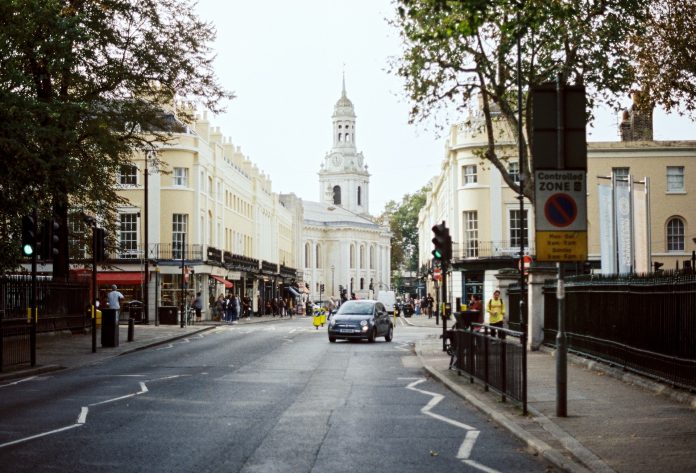In bustling urban environments, ensuring the safety of pedestrians is a paramount concern for city planners and local governments. One effective measure that has been widely implemented to enhance public safety is the installation of pedestrian guardrails. These structures serve as crucial barriers between vehicular traffic and pedestrian pathways, significantly reducing accidents and promoting orderly movement within city landscapes. Armco pedestrian guardrails are one of the most reliable barriers to used for many public safety purposes.
Enhancing Traffic Control and Flow
Pedestrian guardrails are strategically placed to manage and direct the flow of both pedestrians and vehicles, particularly in high-traffic areas. By delineating clear boundaries, guardrails prevent jaywalking and encourage pedestrians to use designated crossing points. This systematic organization of pedestrian movement not only reduces the risk of accidents but also ensures a smoother flow of traffic. For instance, in cities like London and New York, pedestrian guardrails have been installed at busy intersections and near public transportation hubs to manage the influx of people and vehicles efficiently.
Preventing Accidents and Fatalities
One of the most significant benefits of pedestrian guardrails is their ability to prevent accidents. According to a study by the World Health Organization, nearly 1.35 million people die annually due to work accidents, road traffic accidents, with pedestrians accounting for a substantial portion of these fatalities. Pedestrian guardrails act as physical barriers that protect individuals from stepping directly into the path of oncoming traffic, thereby reducing the likelihood of collisions. In Tokyo, for example, the installation of guardrails along major roads has been credited with a notable decrease in pedestrian injuries and fatalities.
Protecting Vulnerable Populations
Pedestrian guardrails are particularly beneficial for protecting vulnerable groups, such as children, the elderly, and individuals with disabilities. These populations are at a higher risk of accidents due to slower reaction times and reduced mobility. Guardrails provide a sense of security and guidance, helping these individuals navigate busy streets more safely. In cities with large populations of elderly residents, such as Miami, the presence of pedestrian guardrails near retirement communities and healthcare facilities has been instrumental in enhancing pedestrian safety.
Reducing the Severity of Vehicle-Pedestrian Collisions
In the unfortunate event of a vehicle-pedestrian collision, pedestrian guardrails can mitigate the severity of injuries sustained. The guardrails act as a buffer, absorbing some of the impact and preventing pedestrians from being thrown into traffic lanes. Research conducted by traffic safety experts indicates that cities with well-implemented pedestrian guardrail systems report fewer severe injuries in such accidents. This has been observed in European cities like Stockholm, where stringent safety measures, including the use of guardrails, have contributed to its reputation as one of the safest cities for pedestrians.
Enhancing Urban Aesthetics and Functionality
Beyond safety, pedestrian guardrails contribute to the overall aesthetics and functionality of urban spaces. Modern guardrails are designed to blend seamlessly with the city’s architecture and landscape. They can be customized to include features like seating, planters, and lighting, thereby enhancing the visual appeal of streetscapes while providing additional functionality. Cities like Paris have embraced these multi-functional designs, integrating pedestrian guardrails that not only protect but also beautify public spaces.
Encouraging Active Transportation
Pedestrian guardrails can also play a role in promoting active transportation, such as walking and cycling. By creating a safer environment for pedestrians, cities can encourage more residents to opt for walking or biking over driving. This shift not only reduces traffic congestion and pollution but also promotes a healthier lifestyle. In Copenhagen, renowned for its bike-friendly infrastructure, pedestrian guardrails are part of a broader strategy to prioritize non-motorized transportation, contributing to the city’s status as one of the world’s most livable places.
Supporting Law Enforcement and Emergency Services
From a law enforcement perspective, pedestrian guardrails assist in maintaining order and enhancing the effectiveness of crowd control during large public events or emergencies. Guardrails can be used to create clear pathways for emergency vehicles and personnel, ensuring that they can reach their destinations quickly and efficiently. In cities like Boston, during events such as the Boston Marathon, pedestrian guardrails are essential for managing the movement of spectators and ensuring swift emergency response when needed.
Addressing Public Concerns and Challenges
While the benefits of pedestrian guardrails are substantial, it is important to address public concerns and challenges associated with their installation. Some critics argue that guardrails can create a sense of confinement and detract from the open feel of urban spaces. Additionally, there is the challenge of ensuring that guardrails are accessible and do not obstruct the movement of individuals with disabilities. Urban planners and designers must balance these considerations by choosing designs that are both functional and aesthetically pleasing, and by engaging with the community to address their concerns.
Conclusion
In conclusion, pedestrian guardrails are a vital component of urban safety infrastructure. Their ability to enhance traffic control, prevent accidents, protect vulnerable populations, and reduce the severity of collisions underscores their importance in city planning. Moreover, their role in improving urban aesthetics, encouraging active transportation, and supporting law enforcement highlights their multifaceted benefits. As cities continue to grow and evolve, the strategic implementation of pedestrian guardrails will remain essential in creating safer, more efficient, and more attractive urban environments. By prioritizing the safety and well-being of pedestrians, cities can foster communities that are not only more secure but also more vibrant and livable.



 Bitcoin
Bitcoin  Ethereum
Ethereum  Tether
Tether  XRP
XRP  Solana
Solana  USDC
USDC  TRON
TRON  Lido Staked Ether
Lido Staked Ether  Cardano
Cardano  Avalanche
Avalanche  Toncoin
Toncoin